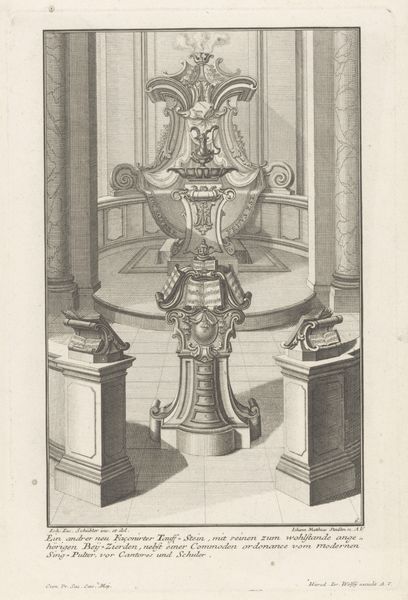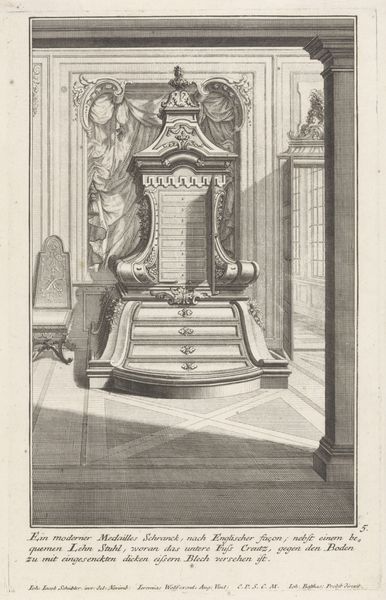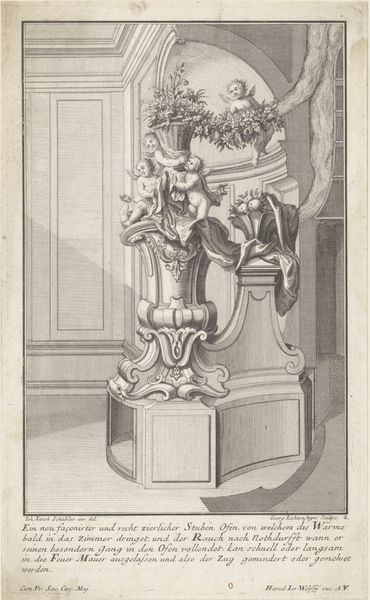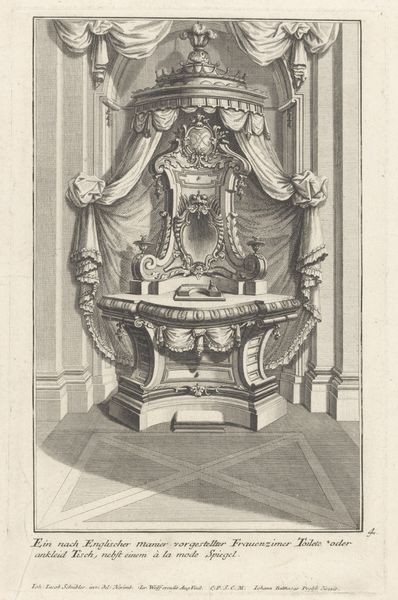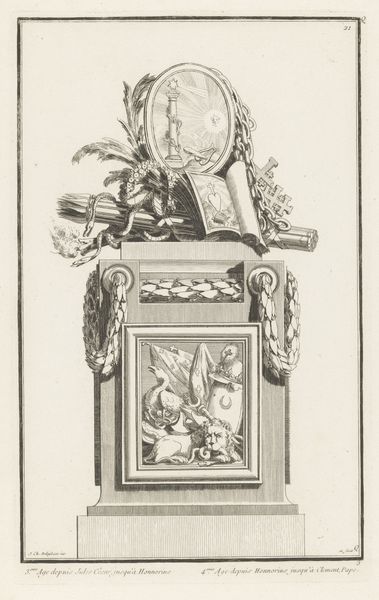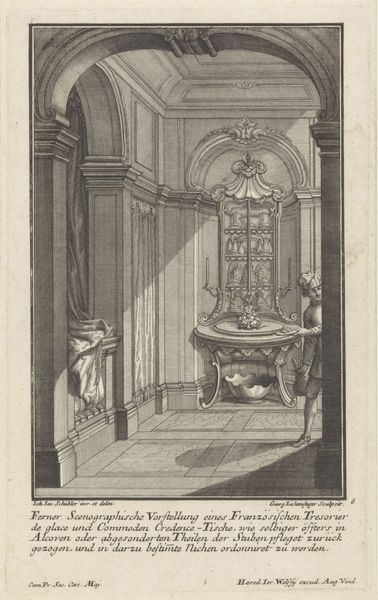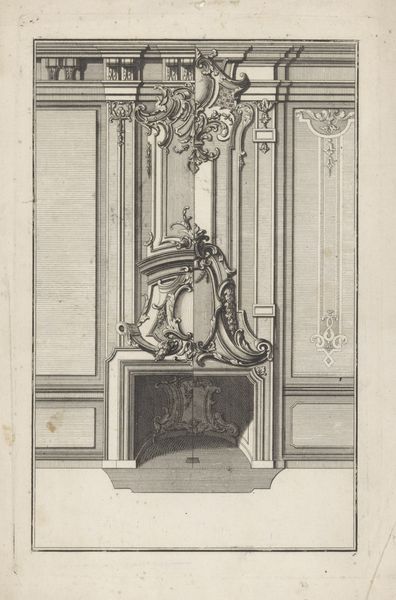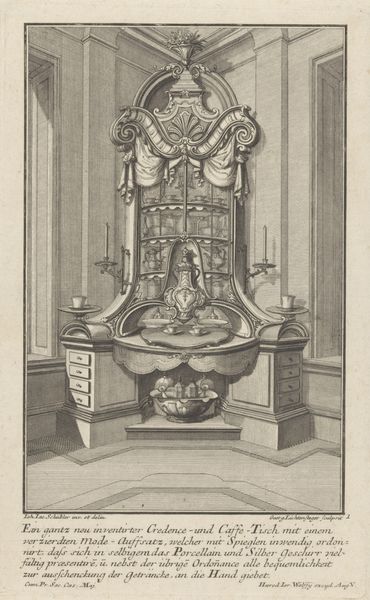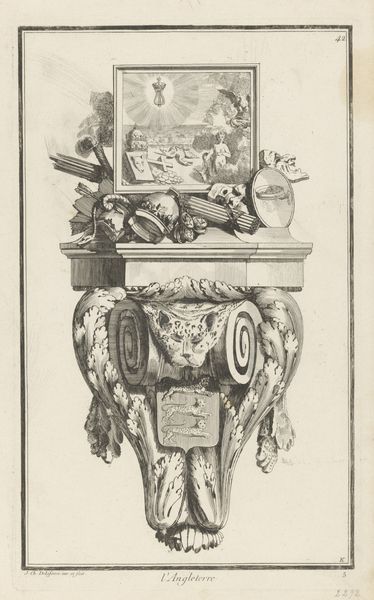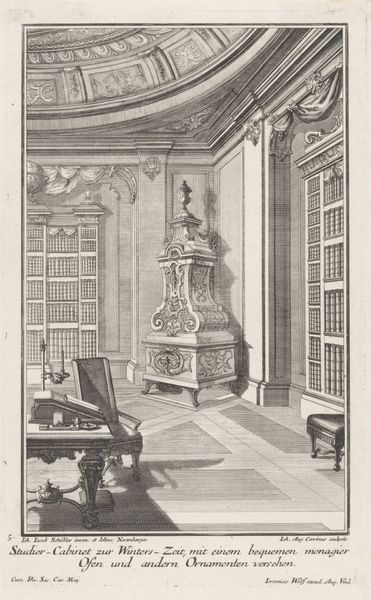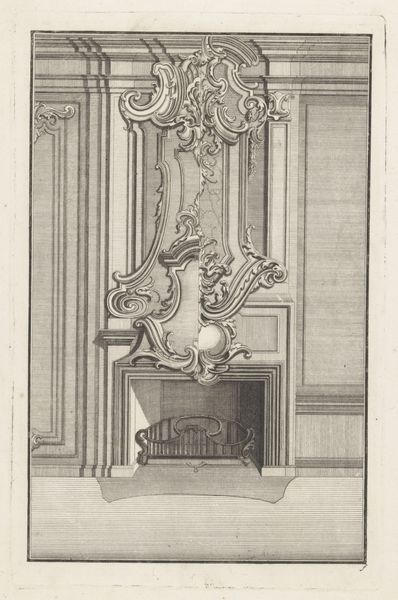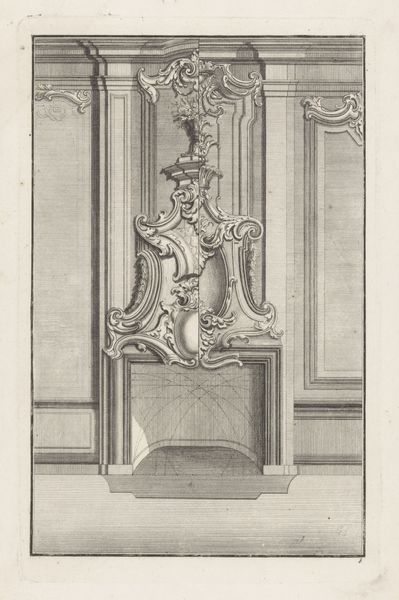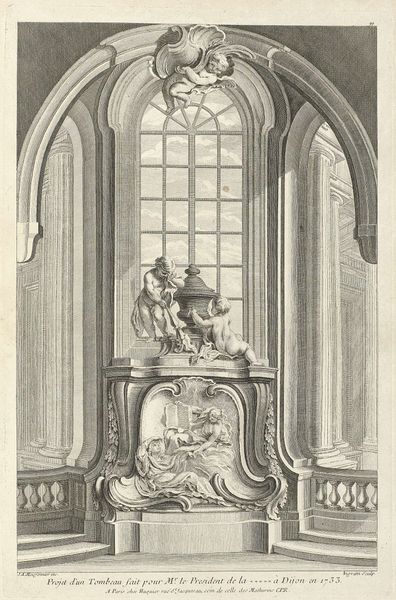
drawing, engraving
#
drawing
#
baroque
#
old engraving style
#
engraving
Dimensions: height 295 mm, width 185 mm
Copyright: Rijks Museum: Open Domain
Editor: We’re looking at "Schrijftafel met stoel," or "Writing Table with Chair," an engraving from between 1709 and 1724 by Johann Balthasar Probst, housed in the Rijksmuseum. The detail is just incredible! The composition, all crisp lines and elegant curves, gives the piece such a stately, almost theatrical feel. What do you see in this work, thinking about its visual properties? Curator: Immediately, I am struck by the deliberate geometry underpinning the image. Note the precise articulation of the perspective. The orthogonal lines converging towards a vanishing point beyond the depicted scene construct a palpable sense of depth and order. Consider also the interplay between rectilinear and curvilinear forms—the rigid architecture versus the ornate flourishes adorning the desk and chair. Editor: That's a great point. I was focusing on the overall image, and now I see these shapes. Are there particular visual elements that stand out to you? Curator: Observe how the artist uses light and shadow, not for atmospheric effect, but as a structural tool. Notice how the lines, with sharp and unwavering certainty, carve out planes, defining the volume of each object. This calculated deployment of chiaroscuro speaks to a desire for clarity, a preference for intellect over emotion. The globe echoes in smaller scale by an ink well, also sphere shaped, creates the perspective we associate with symbolic formalism. Editor: So you're saying it's less about the subject matter itself, a writing table, and more about how Probst uses visual tools to convey a sense of order and…intellect, as you said. It's all about the relationship between lines, forms, and the creation of space. Curator: Precisely. By divesting the scene of subjective feeling, by foregrounding formal concerns over representational accuracy, Probst compels us to engage with the work on a purely intellectual plane. We're left to consider how form itself generates meaning. Editor: That's fascinating! I'll never look at baroque engravings the same way again. This emphasis on the architecture within the image definitely changes how I perceive its story. Curator: Indeed. Attending to the internal logic of the visual language illuminates new interpretive possibilities.
Comments
No comments
Be the first to comment and join the conversation on the ultimate creative platform.

